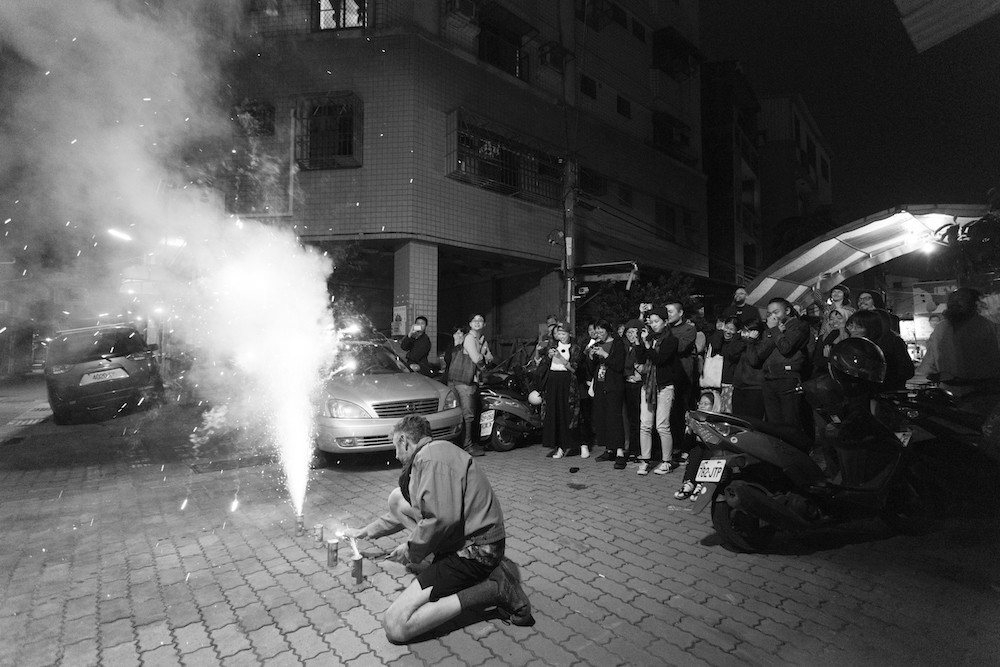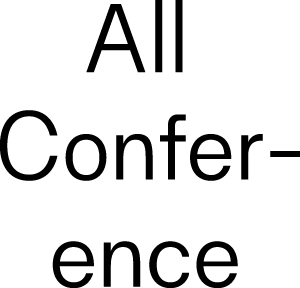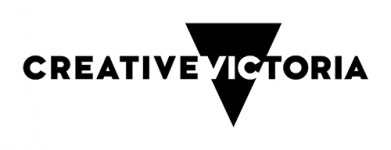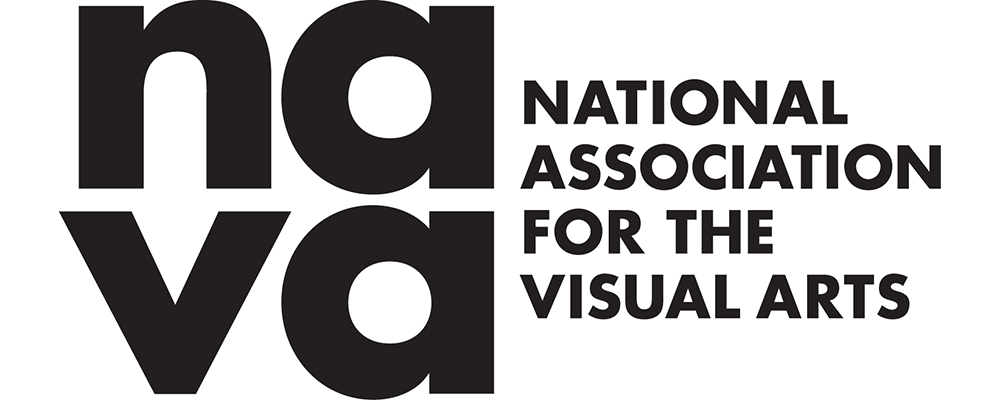Liquid Architecture (LA) is Australia’s leading organisation for artists working with sound and listening. LA is based on Wurundjeri Woi Wurrung Country, at the Collingwood Yards art precinct. Our program sits at the intersection of contemporary art and experimental music, expressed through a range of presentation, publishing, research and commissioning activities.
BACKGROUND
Born in the complex artistic climate of the late 1990s, LA is a millennial imagination of Australia’s vibrant experimental sound culture. Founded in 1999, over the following 15 years, under the direction of Nat Bates, LA grew from being a boutique local event into Australia’s leading festival of experimental, electronic, improvised and avant-garde music.
In 2014, the organisation pivoted with an injection of ideas and resources, and the appointment of Joel Stern and Danni Zuvela as the organisation’s artistic leadership. The duo dissolved the festival model in favour of something more open, unpredictable and experimental: a year-round, curatorial program of boundary-pushing public events, happenings and situations untethered to any one discipline, ideology or format.
Forever expanding and evolving to meet our horizons, the cultural institution we know today as Liquid Architecture is fuelled by the ideas and energies of our team and augmented by the expertise of our board and advisors.
Under the leadership of Kristi Monfries alongside Creative Producer Rohan Rebeiro, Creative Producer James Howard and Programs Coordinator Ronen Jafari, the new direction will expand on this legacy to build strong foundations and relationships with sound experimentations from First Nations, Diasporas, Asia and the Pacific.
Grounded locally but working globally, LA is a dedicated platform for artists engaged in experimental sound practice, sustained and energised through conversation and research, and realised in collaboration with people in our community and beyond.
We acknowledge the Wurundjeri Woi Wurrung as the Traditional Owners and sovereign custodians of the Country on which we practice. We extend our respects to their Elders past and present, and to all First Peoples.
Team
BOARD
DANNY BUTT (CHAIR) is Senior Lecturer in Interdisciplinary Practice at Victorian College of the Arts, University of Melbourne, where he is also Coordinator of Research for Design and Production. His book Artistic Research in the Future Academy was published by Intellect/University of Chicago Press in 2017, and he is on the Editorial Board of the Journal for Artistic Research and is co-convenor of the Asia Pacific Artistic Research Network. As a Certified Management Consultant (CMC) he worked for intergovernmental agencies such as United Nations Development Programme and ASEAN on new media and development and was editor of the book Internet Governance: Asia Pacific Perspectives (Elsevier/UNDP 2006). He works with the Auckland-based art collective Local Time. He moved from Gadigal country in Sydney to Port Chalmers / Koputai, Aotearoa New Zealand in 1993, performing improvised sound and releasing recordings through the 1990s with Peter Stapleton and Kim Pieters in the groups Rain and Flies Inside the Sun (with Brian Crook); with Michael Morley in the Tanaka-Nixon Meeting; and as Cobweb Iris.
REBECA SACCHERO (DEPUTY-CHAIR)
Rebeca Sacchero is a Producer with extensive experience across multiple Metro Melbourne Inner North Local Government Areas. Rebeca understands the local government context whilst also having relationships and experience in small to medium arts orgs. She has been working in the space of community engaged practice and is passionate about creating arts access for under-represented communities. She has a strong track record of successful projects with youth, the LGBTQIA+ community, CALD communities and seniors. She has worked across visual arts, performing arts and digital media, with a range of government and private stakeholders. These include major festivals, local and state Government, ARI’s, schools, community health orgs, and social enterprises. She completed a degree in Art History and Curatorship at Monash University in 2017 and in 2019 was selected for Leadership Victoria’s LGBTQIA+ Leadership program. She also runs her own community building electronic music events in which she has toured international artists, and is a DJ.
MARK NOLEN (TREASURER) is a Certified Practising Accountant with extensive experience in the creative industries sector. He is currently Management Accountant at ACMI, having previously worked in a similar role at Film Victoria. Along the way, he has helped countless singers, actors, and even clowns get their taxes in order – no laughing matter! When not crunching numbers, you can find Mark sitting back with a fine drop of Scotch whisky, soaking up some even finer tunes.
CLAIRE BREDENOORD (SECRETARY) is an education designer and creative producer with experience in non-profit arts organisations, higher education and start-ups. She has a background in socially engaged arts practice and publishing, most often working across disciplines to produce multimodal projects. Most recently, Claire has contributed to the launch of Industri Education, a live music education organisation aiming to provide pathways into industry, as the Operations and Education Lead. A notable achievement has been collaborating with live music industry stakeholders to design new courses in technical production. Claire holds a Juris Doctor and a Master of Arts and Community Practice. She aims to continue developing her diverse skill set and passion for relational community practice to contribute to First Nations peoples’ fight for justice.
MONICA LIM (MEMBER) is a Melbourne-based pianist and composer of classical contemporary and experimental music. Born in Malaysia and then migrating to Australia in her teens, Monica initially practiced as a Tax Consultant for Deloitte Touche Tohmatsu, before pursuing her own interests in business and the arts. She has produced work for theatre, contemporary dance, installations, and film, as well as solo and ensemble instrumental pieces. She is interested in new cross-disciplinary genres and forms as well as combinations of new technology with music. Monica is currently undertaking a PhD at the Faculty of Fine Arts and Music, University of Melbourne in interactive technology, AI and gesture-led composition. Monica is co-founder of Project Eleven, a philanthropic initiative which supports the contemporary arts and serves on the boards of the Melbourne Recital Centre, the Substation as well as the Member’s Council for Musica Viva.
NARETHA WILLIAMS (MEMBER) is an accomplished practitioner in the Australian creative industries sector. An established artist and music producer, she is a seasoned industry professional with extensive experience across a dynamic range of appointments. Naretha has worked with leading Australian companies and First Nations initiatives, flagship festivals and events, has toured internationally and won several awards. Credits include: St Kilda Festival, Bless Your Blak Arts Festival, Australasian World Music Expo, International Symposium on Electronic Art, Yirramboi First Nations Arts Festival, Science Gallery London, Chunky Move, Performance Space New York, The Melba Spiegeltent, Melbourne Town Hall Grand Organ, Sydney Myer Music Bowl, Sydney Dance Company, and Melbourne’s Flash Forward.
GAIL PRIEST (MEMBER) is a sound artist and writer based on Dharug and Gundungurra land (Katoomba, NSW). Her work spans soundtracks for dance, theatre and video, solo electro-acoustic performance as well sound installations for gallery contexts, both solo and in collaboration. She has performed her live compositions and exhibited sound installations nationally and internationally including in Japan, Hong Kong, Germany, France, Norway and the Netherlands. In 2015-16 she was awarded an Emerging & Experimental Arts Fellowship from the Australia Council. She has undertaken numerous radio commissions and releases music on her own label Metal Bitch Recordings as well as Flaming Pines, Endgame Records and room40. She curates events and exhibitions and writes fictively and factually about sound and media art, working for RealTime magazine for over 15 years. She has been on the board of Performance Space (2011-2014), and a peer assessor for the Australia Council. She has just completed a PhD in creative sound theory at UTS. www.gailpriest.net
DAVID CHESWORTH (MEMBER) is an artist and composer, known for his experimental, and at times minimalist music, who has worked with electronics, contemporary ensembles, film, theatre, and experimental opera. Together with Sonia Leber, David has created installation artworks using sound, video, architecture and public participation. Exhibitions include ‘56th Venice Biennale (2015), ‘19th Biennale of Sydney (2014), and Melbourne Now, National Gallery of Victoria, Melbourne (2013-14). Festivals featuring Chesworth’s music and sound works include Ars Electronica; Festival D’Automne de Paris; Bang on a Can Marathon, New York, Biennale of Sydney; Adelaide and Melbourne Festivals; and MONA FOMA. Early in his career he was co-founder of post-punk band Essendon Airport and for five years was coordinator of the Clifton Hill Community Music Centre, Melbourne. David is a Vice-Chancellor’s Postdoctoral Fellow at RMIT University, Melbourne, researching auditory archives.
STAFF
Kristi Monfries (CEO + Director)
Rohan Rebeiro (Senior Creative Producer)
Ronen Jafari (Programs Manager)
James Howard (Creative Producer: First Nations Programming)
Bianca Winataputri (Editor - Disclaimer)
LA ASSOCIATES
Laura McLean and Suvani Suri (Associate Curators - Capture All)
Helen Grogan (Associate Advisor - Liquid Archive)
INTERNS
Maresca Hidayat
Olivia Stephen
Jess Phillips
Contact
We welcome conversation, ideas and feedback at any time.
info@liquidarchitecture.org.au
TW, FB, IG, YT, MX, SC
Journal, Podcast
104/35 Johnston Street
Collingwood VIC 3066
AUSTRALIA
LIQUID ARCHITECTURE
SOUND INC
ABN 73128090237
ASN A0050679K
Privacy Statement
Liquid Architecture (LA) is committed to protecting the privacy and security of personal information obtained and stored about its audience or clientele, including users of this website.
We understand and appreciate that our audience or clientele and users of this website are concerned about their privacy and the confidentiality and security of any information that may be provided to us.
This policy applies when Liquid Architecture determines what information will be collected or disclosed, or how any information will be processed.
We take a broad understanding of what constitutes ‘personal information’. We understand ‘personal information’ to include any information relating to an identified or identifiable natural person. An identifiable natural person is one who can be identified, directly or indirectly, in particular by reference to an identifier such as a name, an identification number, location data, an online identifier or to one or more factors specific to the physical, physiological, genetic, mental, economic, cultural or social identity of that natural person.
Liquid Architecture is bound by the Australian Privacy Principles contained in the Commonwealth Privacy Act and is compliant with the Privacy Amendment (Enhancing Privacy Protection) Act 2012.
We may, from time to time, review and update this Privacy Policy to take account of new laws and technology, changes to Liquid Architecture’s operations and practices and to make sure it remains appropriate to the changing legal environment.
THE TYPES OF PERSONAL INFORMATION LA COLLECTS
The type of information Liquid Architecture collects and holds includes (but is not limited to) personal information, including sensitive information, about:
- Contact information including email address, phone number, names, gender, organisation, role.
- Connection information including linkages and referrals between people.
- Financial information including amounts paid to LA, donated to LA, or received by LA.
- When you visit our website, our server maintains an access log that includes the following information: the visitor’s IP address, the date and time of the visit to the site, the pages accessed and documents downloaded, the previous site visited, and the type of browser used.
- When you visit our website, cookies are stored on your device that provides information to Google Analytics to give us statistical information about our visitors.
HOW PERSONAL INFORMATION IS COLLECTED
LA collects personal information in a variety of different ways depending on the type of contact that is made with the organisation. We collect personal information both from individuals directly and from third parties.
- Subscribing to LA’s newsletter via the website, in-person or other means
- Visiting LA’s website
- Registering for LA’s programs of events (eg. performances, workshops, lectures)
- Purchasing a ticket for LA’s programs of events via a ticketing system
- Making an online enquiry
- Making an individual donation to LA
- Becoming a sponsor
- Submitting a proposal to LA
- Providing written feedback to LA
- Through agreements with programming partners to add addresses to our mailing lists
- Images of persons might be collected during documentation of an LA performance
- If you become a LA Associate, Volunteer or Board Member
LA may also collect personal information over the phone, in person or by electronic correspondence in order to undertake its regular administrative operations
WHY PERSONAL INFORMATION IS COLLECTED
LA collects personal information in order to service the needs of its staff, audience and partnerships. This information is only used with your consent. Your personal information may be retained and used for the following purposes:
- To communicate with staff, artists, associates, volunteers, or Board Members
- For communicating about upcoming programs and services offered by LA and its partners
- For documenting LA performances and events
- To communicate to LA audiences on behalf of other arts or government organisations offering information regarding their products
- For artistic program research and organisational continuous improvement purposes
All details are kept secure at all times and any individual may request their information is not used for direct marketing, research or any other purpose.
DISCLOSURE OF PERSONAL INFORMATION
LA will not sell, lend, disclose, or give personal information of its audience or clientele to external individuals or organisations without first obtaining the customer’s consent.
LA may, however, disclose your personal information or financial data (information exchanged in transactions relating to donations, ticket purchasing or any other product sold):
- To our insurer or legal advisors for the purpose of obtaining insurance coverage, obtaining professional advice, and managing risks.
- To our payment services providers or financial institutions. LA will share transaction data only to the extent necessary for processing, refunding, or dealing with queries about payments.
- In a situation where such disclosure is necessary for compliance with a legal obligation that LA is subject to, or in order to protect the vital interests of a person.
LA will not disclosure personal information to recipients in another jurisdiction unless that jurisdiction has a privacy regime at least as equally protective as Australia. LA will always ask for specific consent before disclosing personal information to a recipient in another jurisdiction.
PERSONAL INFORMATION ACCURACY
LA is committed to ensuring all personal information it collects is accurate, complete and up-to-date. However, the accuracy of this personal information to a large extent depends on the information provided by its clients. LA asks that all clients:
- Advise us if you become aware of any errors in your personal information.
- Advise of any changes in their personal details, such as address, email address and phone number.
YOUR RIGHTS
At any time, any person has the right:
- To know what personal information LA holds about them and how it has been used
- To correct or alter any personal information LA holds about them
- To have the personal information about them erased
- To withdraw consent for the collection, retention, disclosure, use or processing of personal information
- To make a request or inquiry, write to info@liquidarchitecture.org.au
WEBSITE
The LA website contains links to other sites. LA is not responsible for the privacy practices of other sites. LA encourages users when they leave the site to read the privacy statements of each and every web site that collects personal information. This privacy statement applies solely to the activities of LA.
GENERAL DATA PROTECTION REGULATION (GDPR)
LA operates occasional European artistic programming and partnerships, and complies with the data protection policies required by the European Union General Data Protection Regulation (the GDPR) since 25 May 2018.
OUR DATA SECURITY POLICY
LA takes steps to prevent the personal information it holds from misuse, loss, interference or unauthorised access.
LA will also destroy or de-identify personal information when it is no longer needed, or when requested.
ENQUIRIES
If you would like further information about the way Liquid Architecture manages the personal information it holds, please contact LA via info@liquidarchitecture.org.au.
Feedback & Complaints
Liquid Architecture (LA) is committed to respecting feedback and complaints and continually improving our processes. This policy is intended to ensure that we handle complaints fairly, efficiently and effectively. We encourage feedback as part of improving our audience experience and artistic programming.
You can provide feedback or make a complaint via email via email to info@liquidarchitecture.org.au.
HOW DOES LA HANDLE FEEDBACK AND COMPLAINTS?
Upon receiving feedback or a complaint, LA will acknowledge receipt of the feedback or complaint; and request further information if necessary and advise how the issue is likely to be resolved.
LA will not respond to feedback or complaints that violate State or Federal laws, or suggest that others do so; contain profane, violent, abusive, sexually explicit language or hate speech; or are bullying, harassing or disruptive in nature.
Where possible, complaints will be resolved at first contact with us. When appropriate we may offer an explanation or apology to the person making the complaint. Where this is not possible, we may decide to escalate the complaint to LA’s CEOs or Board. Where a person making a complaint is dissatisfied with the outcome of our review of their complaint, they may seek an external review of our decision.
We will take all reasonable steps to ensure that people making complaints are not adversely affected because a complaint has been made by them or on their behalf.
All complaints are confidential. We accept anonymous complaints if there is a compelling reason to do so and will carry out a confidential investigation of the issues raised where there is enough information provided.
HOW LONG WILL IT TAKE FOR MY COMPLAINT TO BE RESOLVED?
The time it takes to resolve a matter depends on the issues raised and any enquiries that need to be made. As a guide, LA aims to acknowledge written feedback and complaints within 1 business day of receipt (if an email address or phone number is provided); respond to all written feedback and complaints within 5 business days of receipt.
LA will consider the matter closed if you indicate that you are satisfied with the response, or LA does not hear from you within 10 business days after sending you its response.
WHAT IF I’M NOT HAPPY WITH THE RESPONSE?
If you are dissatisfied with LA’s response you are encouraged to contact LA to request an internal review. You should outline in writing why you are dissatisfied with the response; and the outcome you are seeking. LA will provide a further response within 10 business days of receiving this information.
If you are dissatisfied with the outcome of our review of their complaint, you may seek an external review of our decision (by the Australian Charities and Not-for-Profits Commission for example).
Australian Charities and
Not-for-Profits Commission
Advice team: 13 22 62
Online Form
TICKET REFUNDS AND EXCHANGES
LA may provide an exchange or refund of a ticket if problems arise before, during or after an event. LA encourages our audience to try to resolve problems as soon as possible after they arise so that we have the best opportunity to find a solution.

Entering Tone: Liquid Architecture in Taiwan
This is our organisation’s second visit to Taiwan. Our first, in 2016, was a vastly informative research trip. In that trip, through meeting artists, musicians, curators and organisers in Taipei, Tainan and Taichung, we learned much – and also learned how little we knew.
In 2017, we attempt to apply an open, experimental methodology to the practice of international touring – establishing deeper collaborations between our 5 artists and our Taiwanese colleagues; extending and embedding our engagement locally with pedagogy as well as affect; rejecting the distinction between thinking and making; and generating formal and informal opportunities for interventions in social space. Above all, we are “making listening”, as much as we are “making sound”, as we seek to enhance our capacity to perceive subtle tonalities – even if we do not fully understand them – as we tour Taiwan together.
entering tone
Most Western languages, including English, are atonal. This is not to say that English does not have tones – schematics for different emphases of pitch – but rather that, in English, tonality is not a defining characteristic of the pronunciation of each word. Spoken Chinese, on the other hand, cannot not be tonal (or, be monotonal), since the pronunciation of each syllable is fundamental to the production of meaning when the language is spoken.
The ‘entering tone’ is one of the four major tones of spoken Chinese dialects. Having disappeared from mainland Mandarin, it is one of the distinctive markers of the Taiwanese language. Not a phonetic tone in the sense of pitch relationships, the entering tone denotes a syllable that ends with a glottal stop, the occlusion of airflow in the vocal tract.

The symbol of the glottal stop in the International Phonetic Alphabet. Source: Wikipedia
To English-speaking mouths and English-hearing ears, the entering tone’s plosive stop is, generally, so unfamiliar and so rare as to be eventful; perhaps this is even coded into the mock-gulp of its widely used example of the glottal stop in the English usage, the foreboding exclamation, ‘uh-oh’.
We choose to title our tour Entering Tone because it offers us a way of thinking not about sound, but with sound. For what we are hearing, in the rapid, controlled closure of the throat that produces this tone, is the sound of the sudden shutting off of sound. The throat closes, but the entering tone opens a space where shifting meanings are embedded in a sound.
It is a sonic object that is also a critical absence. With its multiple identity as political actor, strange interjector and silent presenter, the entering tone for us represents a small but vibrant space for engaged listening.
This is Liquid Architecture’s second visit to Taiwan. Our first, in 2016, was a vastly informative research trip. In the course of that visit, meeting artists, musicians, curators and organisers in Taipei, Tainan and Taichung, we learned much – and also learned how little we knew. Through that experience, ongoing conversations, dialogue, and research, and by placing our own assumptions and actions under examination, we have come to view our own position with greater circumspection. The occasion of this major international tour provides us with both cause and opportunity to reflect on the deeper context for our artistic activities, and question the structures within which we, as curators and artists, are positioned and which frame – which is not to say determine – our motivations and actions.
For example, on our first trip to Taiwan, we were initially slightly taken aback by hearing ourselves described as Westerners. The reason for our surprise, we came to realise, is that discourses of ‘East’ and ‘West’ are rarely heard today in Australia, by radicals, at least (unlike another term we heard a lot in Taiwan, ‘‘foreigner’, which is more commonly used in Australia). The differences in usage gave us cause for reflection. Might this be due to the historic centrality of these terms in the historic measurement of relative proximity – or otherwise – to the ‘centre’ of Western Europe, and the continued necessity of the project of repudiating the legitimacy of this imperial dynamic and its legacy in Australia’s history of violent settler colonialism?
Our expanded capacity to grasp and appreciate the ongoing relevance of the designation ‘Western’ for us, as Australians, coming to Taiwan, stems from our experiences in Taiwan in 2016. From our dialogue with Taiwanese artists and thinkers that flowed from that first contact, particularly the conversations with Hong-Kai Wang, we came to understand something of the significance and currency of this designation for non-Westerners, and appreciate the impact its foregrounding in the discourses of de-imperialisation and subaltern studies. To counter complacency about the East-West relationship, a certain openness of attitude is required. We realise that a preparedness to acknowledge and revise long-held preconceptions, to allow ourselves to be genuinely changed by our experiences with non-Western people – in short, a willingness to listen and to learn – must continue to accompany us on tour, as it did during the research trip.
This is the first international tour organised and generated by Liquid Architecture. The considerable privilege of being an experimental organisation able to tour multiple artists internationally comes with the responsibility to recognise that privilege, and a duty, in exercising it, to explore and identify practical alternatives to the well-worked formulae generated by neoliberal agendas globally, as they ‘trickle down’ to forms of cultural expression.
The international tour – that mainstay of experimental and conventional music practice alike – is, as a form, not unproblematic. What is normally foreclosed by the act of touring? What else might a tour, as a concatenation of events planned and unplanned, allow?
In its usual form – a string of appearances separated and defined by time and geography – the tour is a series of fleeting engagements. The logistics of scheduling dictate a tight window for engagement with each city, often limited to the recruitment of local support acts. Furthermore, the tour itself is based on a presupposition that the work is inherently worth listening to, a presumption which serves to compound the colonialist echoes which would inhere in any incoming venture consisting of a one-way, top-down dispatch of predominantly white – Western – culture.
The consideration we have given these matters has helped give shape to Liquid Architecture’s 2017 tour.
To mitigate the insubstantiality of the tour form, and attempt to generate opportunities for social solidarity with communities in Taiwan, the tour proceeds from two strategies devised to embed our practice locally. The first is the extension of the tour format to encompass a social program between our artists and Taiwanese counterparts which precedes our formal tour, and whose aim is to establish conditions conducive to mutual discovery and respectful collaboration.
The second is the equal importance given to discursive, critical and pedagogical activities as to live performances throughout the Entering Tone artistic program. These activities include the Symposium at the Taiwan National Museum of Art (November 24); the Social Sound Houses in Tainan (November 26) and Taipei (November 29); and the Political Listening talk in Taipei, which together offer a kind of alternative curricula, in the form of the affective pedagogy of workshops, talks, and sharing social space. From formal discursive platforms to free-wheeling interventions, these events are aimed at the possibility of constructing social solidarity via exchange and collective listening.
We have attempted to collaborate on every aspect of this tour, from the fluid and dynamic collaborative decision-making process of the co-curation of the artistic program for each event, to establishing flows of discussion between artists, to the program catalogue you are holding in your hands right now (or, post-facto, reading online). Our idea of active listening has necessitated, wherever and however possible, the amplification of Taiwanese voices, in the language of their choice.
We haven’t been able to get beyond or resolve the issues of the tour format as a string of brief interactions predicated on too-short, resource-limited engagements – and we were not, in fact, able to collaborate on everything. The Australian artists, for logistical reasons, were curated long ago, leaving little room for Taiwanese input on our choice of cohort. We chose our artists carefully to reflect the depth, heterogeneity and talent of Australian contemporary sound art practice – but in so doing, we did forfeit the chance for full co-authorship, which remains a hoped-for possibility for the future.
What we have done instead, we hope, is bring together what we believe to be a the most vital curated cross-section of contemporary Australian sound and listening practice. Andrew McLellan, Clare Cooper, Jannah Quill, Nathan Gray and Rainbow Chan represent some of the most interesting critical artists working in sound in Australia today, and their multiple talents enable us to collectively create the richest possible conditions for dialogue and listening into which to invite the Taiwanese audience.
*
Liquid Architecture’s interest in Taiwan was sparked, in part, by an article we encountered, in 2013, about Hong-Kai Wang’s critical listening practice. We invited Hong-Kai to Australia in 2014, where the residency she undertook underscored for us the importance of being together in the space of cultural production. Our continued dialogue and friendship with Hong-Kai led to her generous facilitation of our research in Taipei in 2016, and we are grateful for the many connections, and many more rigorous conversations provided so generously by Hong-Kai, and honoured by Hong-Kai’s acceptance of our offer to open our Practising Sound, Individually and Collectively Symposium.
We were impressed by our 2016 encounter with the depth of Amy Cheng and Jeph Lo’s research and curatorial intelligence, and are honoured that Jeph will present some of his ideas in his keynote lecture at the Symposium. We are grateful to Acid House and Lacking Sound, artist-run collectives from whom we learned in 2016 about the questions and practices they pursue as agents of critical sound and listening, and with whom in 2017 we are experimenting with the creation of collective social space. And we formally begin our tour in the city of Tainan, where our partner Ting Shuo Hear Say, Alice Hui-Sheng Chang and Nigel Brown, instrumental in facilitating this and our previous visit, have enabled us to open our program with an offering of communion and collective ritual.
Finally, that article about Hong-Kai Wang, by our good friend Mattin, that first sparked our interest in working with artists from Taiwan, was published in White Fungus, and so it feels somewhat fitting that White Fungus are our co-producers of this publication and the SUBLATE event (2-3 December), the grand finale of the ENTERING TONE tour. That essay, and Ron Hanson’s article about the Taiwanese sound scene in that same edition (WF13), enlarged our curiosity to the point of wondering whether a Taiwanese tour might, in fact, be possible. It is a pleasure to collaborate with a publication that has provided so much knowledge and enjoyment to us and readers interested in experimental music and art the world over. We are grateful to Ron and Mark Hanson for extending the characteristic WF openness, energy, insight and vision into the realisation of this collaboration with us.
We are excited about the discursive and performance activities we have planned for ENTERING TONE, and while we don’t know exactly what will transpire across our program of talks, performances and workshops, we can relinquish the need to know, because we know that whatever happens, the awareness we will be generating means we won’t be unchanged.
Curated by Danni Zuvela with Anabelle Lacroix and Betty Apple
Partners


Betty Apple
desecrating the imaginary historical burden and false symbols of race and history
Hong-Kai Wang
A political space is often opened where contradictions and complex relations occur. Rather than constructing a biography that illustrates, it seems more interesting to explore a political history of an artist’s friendship with his collaborators and interlocutors, including myself.
Acid House
Acid House are an experimental collective based in New Taipei City. Their work encompasses music, performances and experimental conversations within a communal setting.
Al Burro
toiling in industrial warehouses, lazing in ambient fields
Andrew McLellan
rather than being slowed down by your brain needing to figure out how to say the words first.
Berserk
Berserk is a noise project initiated by Jared Xu
Chun Yin Rainbow Chan
The fake as a complex sign that shapes new myths, values and contemporary commodity production.
Clare Cooper
Healing through improvised harp and open heart
Dino
A seminal figure in the second wave of the Taiwanese noise movement during the late-1990s
Hsu Chieh
Male, born in 1990, 181cm, Gemini, blood type A.
Interests: shopping, karaoke, dance, watching movies.
Jannah Quill
ordinary digital interfaces and technological machines as materials to generate new experiences reinterpreted from the intended consumer use of the digitally banal
Jeph Lo
ALTERing NATIVism
Kai-Cheng Dai
performance maker, spatial designer, translator, interpreter and cultural tour guide
Kaya Hanasaki
Kaya Hanasaki is an artist born in Tokyo, who’s practice responds to contemporary social issues with performance, installation, workshop and media
Lacking Sound Festival
not a festival per se; rather, LSF is a regular sound performance event taking place in Taipei.
Lonely God
Lonely God is a label/collective based in Taipei.
Nathan Gray
Artist Nathan Gray’s recent works use voice as their medium, taking form as lecture-performances, radio-plays and documentaries, DJ sets, narrative and rumour.
Shi Chao Lai
“none to form as form to none”
Sondes
Tesla coil, home-made electronic instruments and a motion controller, modifying both the sound and light through space and time
SoundWatch
a space to promote the creation, exhibition, performance and renovation of experimental audio art in Taipei
Ting Shuo Hear Say
performance venue, sound studio and listening gallery based in Tainan
Tzu Ni
an exploration of the reciprocally constructed connections between analogue sound and refracted light.
White Fungus
White Fungus is an international art magazine and project based in Taichung City, Taiwan








